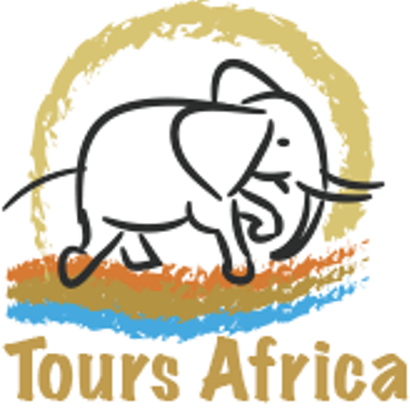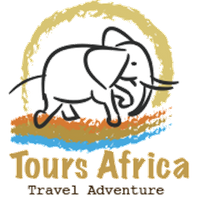
All The Travel Information You Need To Know About Namibia
Highlights of Namibia, as well as all the information every traveler should know
Namibia is in Southern Africa, bordering South Africa, Botswana, Angola, Zambia and the Atlantic Ocean. Namibia boasts natural attractions such as the Namib desert, the Fish River Canyon Park, Etosha National Park and the Kalahari desert.
To truly appreciate Namibia's natural beauty, tour the countryside, deserts and villages with a tour or on a road trip. A must-see would be the Namib desert which stretches for nearly a 1000 km along the Atlantic coast. Its sand has a unique rust colour and has some of the highest sand dunes in the world.
More than 11 languages are indigenous to Namibia, but due to the country's rich historical past, other languages such as German, French, Spanish and Portuguese are also spoken amongst the population, with English being the official language.
Namibia has 2 small groups of nomadic group; the Khoisan speaking people, known as the Bushmen or San and the Ovahimba people, known as the red people. Namibia was originally inhabited by these nomadic hunters, gatherers and livestock herders.
Namibia is ideal for travelers who appreciate wildlife, safaris, photography and an interest in other cultures.
Namibia's Wildlife
Although a vast majority of Namibia's landscape is desert, the country boasts a rich wildlife regardless. There are 14 birds and 15 mammals almost entirely endemic to the country with a total of 240 reptile species.
To the south, Etosha National Park is home to high densities of game, while to the north wildlife is concentrated around the Kunene River where a large population of Nile crocodiles live. To the west, the Kaokoveld’s dry and isolated wilderness boasts desert-adapted animals where elephants, giraffes, lions and brown hyaenas roam.
Namibia's Culture
The country’s largest ethnic group is the Ovambo, making around half the population. Some of the country’s smaller groups of peoples, like the San (or Bushmen) in the east and the Himba in the north, still keep to their nomadic lifestyles.
The San men still hunt with poison arrows while women forage for edible plants, roots and fruits across the Kalahari. Himba men herd cattle and often wear animal-skins. Himba women apply ochre powder to their hair and bodies, which helps protect them from the harsh sun, while giving them a red appearance.
While the vast majority of Namibians are Christian due to missionaries arriving in the 19th Century, many maintain certain aspects of their traditional religions such as communicating with their ancestors.
Visitors to Namibia are often surprised by the strong German influence in Namibia, seen in the architecture of certain towns such as Luderitz and Swakopmund, and the German language spoken amongst the people. Namibia's culture of today reflects both African and European elements making it an interesting mix of both world.
Namibia's Currency
The Namibian dollar has been the currency of Namibia since 1993. It is divided into 100 cents. The dollar replaced the South African rand, which used to be Namibia's currency while it was under South African rule as South-West Africa.
The rand is still legal tender, as the Namibian dollar is linked to the South African rand and can be exchanged on a one-to-one basis. The Namibian dollar offers favourable rates of exchange for foreigners therefore your travel budget will go surprisingly far.
Credit cards are accepted at establishments in urban Namibia. Visa and Mastercard are most commonly accepted but rural areas are more likely to only accept cash payment.
Getting To Namibia
There are few direct flights to Namibia and most people have a stop-over in OR Tambo International Airport Johannesburg, South Africa.
Namibia's main airport is Hosea Kutako International Airport located 40km east of Windhoek, the capital city of Namibia.
If you'd prefer to drive to Namibia, the roads are well-maintained and safe.The two main border posts from South Africa (Ariamsvlei & Noordower) are open 24 hours while the other border posts close at night.
Road travel allows you to explore Namibia efficiently at lower costs, however driving into certain areas may require a 4x4 vehicle.
Passport, Visa and Other Entry Requirements To Namibia
In order to travel into Namibia, you are required to have a Visa application form, a passport valid for at least 6 months from the returning date of entry and at least 3 or more blank pages.
You will also need to be able to prove your flights bookings or means of transport, 3 months bank statement or copies of international credit card and proof of accommodation bookings.
If you are traveling with miners, their full birth certificates are required, proof of guardianship or consent from the guardian.
The Best Time to Visit Namibia
It's difficult to determine which time of the year is best to visit Namibia. It would largely depend on what you'd like to do.
The dry May to October winter months can be the best time to visit Namibia if you're wanting to go game viewing. The skies are clear, the risk of malaria is at its lowest, and animals are increasingly concentrated around water sources as the water levels run low.
The summer season between the months of November and April can be beautiful. The summer rain turns the landscapes green and brings floods to the desert, which can be great settings for photographers.
Namibia's wettest region is the Zambezi Region, where you will need to take extra precautions against malaria, especially in the peak wet months
Namibia's Malaria Risk and Vaccinations
The risk of contracting malaria in Namibia is high in certain regions while other areas are very low. It is advised to know the malaria risk in the region you plan to visit, however even if you may be visiting a region with very little risk, it's better to take the necessary precautions regardless.
Malaria risk is present throughout the year in the Kunene River, Caprivi and Kavango regions. There is a high risk of malaria during November to June in Ohangwena, Omaheke, Omusati, Oshana, Oshikoto and Otjozondjupa. There is low risk of malaria in all other areas of Namibia throughout the year.
You may need to take prescription medicine before, during, and after your trip to prevent malaria, depending on your travel plans, such as where you are going, when you are traveling, and if you are spending a lot of time outdoors or sleeping outside.
Namibia's Climate
Namibia has a subtropical desert climate for the most part. Annual rainfall is low and sunny skies are frequent.
There is little to no rainfall during the entire winter and the daytime temperatures are generally quite pleasant while night temperatures can drop drastically, especially in the desert areas. If you plan to go on a safari during this time, be sure to pack warm clothing because morning and evening game drives can be chilly.
Namibia's wet season takes place during the summer months of November to April. While the heat can get quite high, it can get rather cloudy in the afternoons. The first rains usually arrive in December which brings the plants to life.
Driving In Namibia
In Namibia the cars are right hand drives and everyone drives on the left side of the road. Passengers are required to wear their safety belts and to have their drivers licence on them at all times.
Road signs are international and easy to follow and the standard of the roads in the developed areas are extremely well maintained. It's advised that you drive with caution due to antelope, warthog, and kudu that commonly graze along the roads.
Make sure that you fill up your car's tank when driving to more remote areas of Namibia, as the roads leading to these destinations are often long don't pass many establishments. Just like in South Africa, Namibia's petrol stations are not self-service and they do not accept credit cards.
It's recommended that you always keep your car doors locked and do not pick up hitch hikers. Always be sure to not leave valuables in your parked car.
Namibia's Electric Plug Points/Outlets
Namibia's power sockets are of type D and M. The standard voltage is 220 V and the standard frequency is 50 Hz.
US-made appliances may need a transformer. You can use your electric appliances in Namibia, if the standard voltage in your country is in between 220 - 240 V.
With a few exceptions in deep rural areas, electricity in Namibia is available almost everywhere.
Tipping In Namibia
A 10% tip is the standard in restaurants in Namibia, however it is not compulsory. Like in most African countries, you should use your discretion when tipping staff based on their services and attitude.
Parking lots in Namibia usually have car guards who watch your vehicle while you are in the shops. It is customary to tip them between $5-$10 when you leave the parking lot.
Many lodges work on a communal tipping system with the money shared between staff members. You will usually find the tipping box in the reception area. We recommend tipping about $50 at the end of your stay, however if you feel that you'd like to tip more, you are welcome to do so.
Your tour guides will also greatly appreciate tips. The standard amount to tip your tour guide is usually $100, given to him/her at the end of your tour.
Dress Code In Namibia
Namibians are fairly relaxed when it comes to their daily dress code. They're largely influenced by casual Western fashion and culture, besides for the tribes who deliberately maintain their traditional customs.
Many tourists who visit the African continent feel as if they need to dress in khaki shorts and shirts and while you are most welcome to do so, you will not blend in with the locals.
The people who are seen in traditional clothing fairly regularly are Himba women and Herero women. For tourists, seeing these women in their traditional clothing is exciting but please do not stare.
HIV/Aids
The prevalence of HIV in Namibia is among the highest in the world.
Holiday flings are alluring and hardly uncommon. Please make sure to protect your safety by using condoms in all instances. You alone are responsible for your health and safety.
Dining In Namibia
Seeing as Namibia has various tribes, ethnic groups and influences from around the world, the country's current cuisine cannot be pinpointed and is instead diverse.
Namibia has been influenced by South African cuisine largely. The evidence lies in the fact that Namibians love braai's (barbecues), potjie kos and biltong (dried meat).
Game meat is common and loved throughout Namibia, including kudu, springbok, ostrich and crocodile. For tourists, this may be strange but we urge you to try it out!
There are also various German dishes that have stayed in the Namibian cuisine throughout the years.
Attractions
- Etosha National Park
- Damara Living Museum (Damaraland)
- Sossusvlei
- Kolmanskop Ghost Town (Luderitz)
- Twyfelfontein (Damaraland)
- Namib-Naukluft National Park (Sesriem)
- Fish River Canyon
- Katutura Township (Windhoek)
- Namib Desert
- Swakopmund
- Cheetah Conservation Fund (Otjiwarongo)
- Walvis Bay Waterfront (Walvis Bay)
Leave a comment
Comments will be approved before showing up.






Saskia Carelse
Author